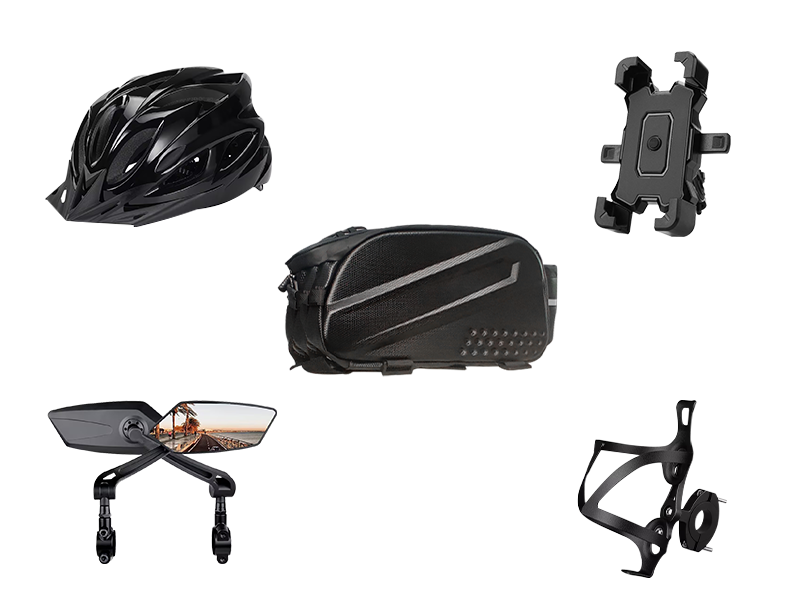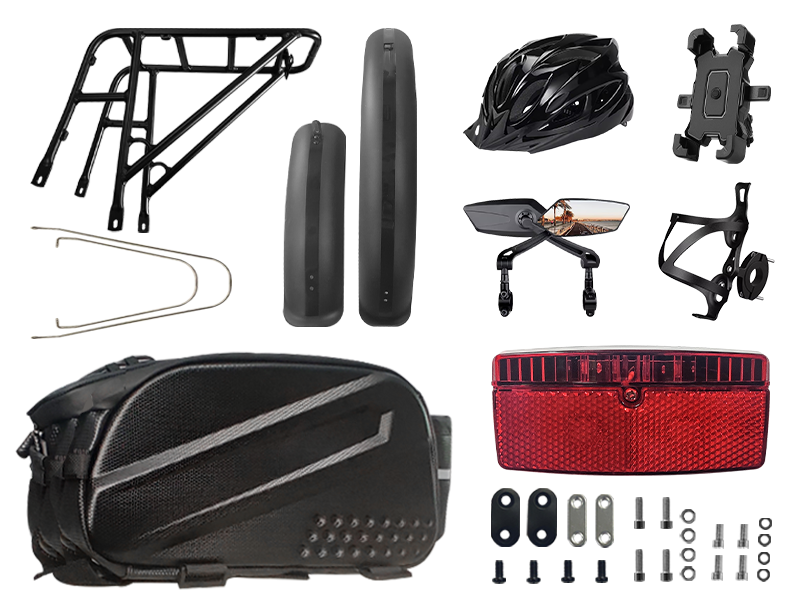What Do Bicycle Street Signs Really Mean? A Cyclist’s Roadmap
JAN 17, 2025
Cycling through the city can feel like navigating a maze—traffic, pedestrians, and street signs all seem to blur together. As a cyclist, understanding what each bicycle-related street sign means is essential for staying safe, following the law, and having a smooth ride. In this guide, we’ll decode the most common bicycle street signs, so you can navigate with confidence and clarity.
1. Bicycle Lane Sign
This sign is one of the most common you'll encounter, and it’s crucial for cyclists. It signals that a specific lane is designated exclusively for bicycles. These lanes are often painted with a solid or dashed line and may be found on both major and minor roads.
- What It Means: A dedicated bike lane where cyclists should ride.
- Tip: Stay within the bike lane, even when traffic is light. It’s not only safer, but also the law in most areas.
2. Bicycle Path Sign
A bike path is a separate, off-road path designed specifically for cyclists. These paths are usually far away from motor traffic and offer a more relaxed cycling experience.
- What It Means: A path that is entirely separate from road traffic, designated for cyclists.
- Tip: These paths often have fewer obstacles, but always be cautious of pedestrians, joggers, and pets.
3. Shared Lane Sign (Sharrow)
The “sharrow” symbol—two chevrons above a bicycle—indicates a shared lane between cyclists and motor vehicles. These signs are often placed on streets with narrower lanes where there isn’t enough room for a designated bike lane.
- What It Means: Cyclists and vehicles are expected to share the lane.
- Tip: Always ride in a predictable manner and be aware of passing vehicles, particularly in congested areas.
4. No Bicycles Sign
This sign is simple but important. It indicates areas where bicycles are not allowed to ride, such as on certain pedestrian paths or restricted zones.
- What It Means: Bicycles are prohibited in this area.
- Tip: Be sure to find alternative routes. Ignoring these signs can result in fines or dangerous situations for both you and pedestrians.
5. Bike Crossing Sign
This sign alerts drivers to a bike crossing, indicating that cyclists may be riding across the street ahead. It’s usually placed near crosswalks or intersections to ensure that motorists are aware of the potential for cyclists to enter or cross the road.
- What It Means: A bike crossing is ahead—drivers should be alert for cyclists.
- Tip: As a cyclist, use caution when crossing roads and always signal your intentions to nearby drivers.
6. Yield to Bicycles Sign
This sign, often found at intersections or pedestrian crossings, instructs drivers to yield to bicycles. It’s a reminder that cyclists have the right of way in certain situations, particularly on designated bike lanes or paths.
- What It Means: Motor vehicles must yield to cyclists.
- Tip: Cyclists, while you have the right of way, always approach intersections with caution. Visibility can sometimes be poor, and it’s always safer to make eye contact with drivers.
7. Bicycle Route Sign
A bicycle route sign marks a designated bike route that’s planned for safe and efficient travel. These routes often avoid heavy traffic areas and may guide cyclists through scenic or quieter streets.
- What It Means: A suggested route for cyclists that offers a safer or more enjoyable ride.
- Tip: Use these routes to plan longer rides or avoid the hustle of busy streets.
8. No Parking for Bikes Sign
Just as you can encounter “No Parking” signs for vehicles, there are also signs that prohibit bike parking in certain areas. These signs usually mark locations where bike racks aren’t allowed or where bikes may be obstructing pedestrian areas.
- What It Means: Bicycles cannot be parked in this area.
- Tip: Always look for designated bike racks or parking zones. Lock your bike in safe, legal spaces to avoid fines or theft.
9. End of Bike Lane Sign
When you reach this sign, it’s a heads-up that the designated bike lane is ending, and you may need to share the road with cars or seek alternative routes.
- What It Means: The bike lane is ending.
- Tip: Prepare to merge with traffic safely and signal your movements clearly to drivers.
10. Bicycle Only Zone
This sign marks areas where only cyclists are permitted, such as park paths, off-road trails, or bike-only bridges. These zones offer cyclists a safe environment free from vehicles.
- What It Means: No motor vehicles allowed—only cyclists are permitted.
- Tip: Enjoy these zones for a stress-free cycling experience. However, be mindful of other cyclists and pedestrians who may also be using the area.
Conclusion: Understanding Bike Signs for a Safer Ride
Street signs exist to help guide all road users safely and efficiently. As a cyclist, knowing what each bike-related sign means will not only keep you safer but also help you respect the rules of the road. Always stay aware of your surroundings, follow the signs, and, above all, enjoy your ride!
Stay safe, keep pedaling, and never stop learning about your cycling environment. Happy riding!












